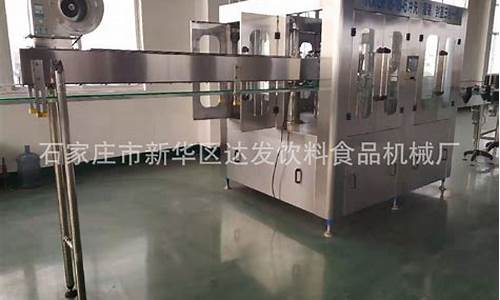Modern herbal tea production relies significantly on efficient filling equipment to ensure quality and productivity. Proper operation and maintenance of these machines are crucial to avoid downtime and ensure consistent output. Here’s a comprehensive guide to managing and maintaining herbal tea filling equipment for optimal performance.
Operational Guidelines
To achieve smooth operation of herbal tea filling equipment, operators must adhere to specific guidelines. Firstly, ensure that the equipment is set up correctly according to the manufacturer’s specifications. This includes adjusting fill volumes, conveyor speeds, and ensuring all components are securely in place.
Secondly, conduct regular inspections before and during operation. Check for any signs of wear and tear on conveyor belts, seals, and valves. Addressing minor issues promptly can prevent major breakdowns later. Additionally, operators should be trained in emergency procedures to handle unexpected situations like spills or mechanical failures safely.
Lastly, maintain a clean working environment. Herbal tea filling equipment should be cleaned daily to prevent cross-contamination and maintain hygiene standards. Regular sanitation reduces the risk of bacterial growth and ensures compliance with health regulations.

Maintenance Procedures
Proactive maintenance is essential to prolong the lifespan of herbal tea filling equipment. Create a maintenance schedule that includes routine tasks such as lubrication, filter replacement, and calibration checks. Lubricate moving parts regularly to minimize friction and prevent overheating.
Inspect electrical components for signs of wear or corrosion and replace any damaged parts promptly. Calibration checks ensure that fill volumes remain accurate, maintaining product consistency. Keep a detailed log of all maintenance activities and equipment performance to identify trends or potential issues early.
Troubleshooting Tips
Despite proactive maintenance, herbal tea filling equipment may encounter occasional issues. Common problems include inconsistent fill levels, leaks, or conveyor jams. Refer to the manufacturer’s manual for troubleshooting guidance specific to your equipment model.
For instance, if encountering fill level inconsistencies, check for air pockets in product lines or faulty sensors. Address leaks promptly by inspecting seals and tightening connections. Conveyor jams often result from improper alignment or foreign objects—clear obstructions carefully and reset the equipment as needed.
Conclusion
Effectively managing and maintaining herbal tea filling equipment is crucial for ensuring continuous operation and product quality. By following operational guidelines, conducting regular maintenance, and knowing troubleshooting tips, operators can minimize downtime and maximize productivity. Remember, adherence to these practices not only enhances equipment performance but also contributes to overall efficiency and customer satisfaction in herbal tea production.






























